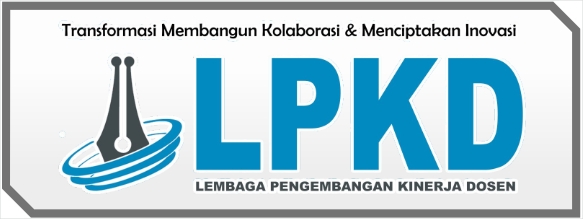Automatic Compact Coffee Maker Using Temperature and Weight Sensors With Arduino Microcontroller
Abstract
In carrying out the process of grounding coffee manually, some people still rely on manual tools and based solely on the help of human hands, ineffectiveness often occurs. If the coffee beans are processed manually, the process will take quite a long time or if the coffee beans are processed manually themselves, it will produce less than perfect coffee bean powder. It is difficult to regulate the level of maturity or detect the right temperature of the coffee beans to produce the right coffee taste. It also requires a roasting process to a grinding process to turn the coffee beans into coffee powder with the right taste. Based on the problems above, the aim of this research is to simplify the process of converting coffee beans into coffee powder automatically and easily. In carrying out the roasting process to the process of refining the coffee beans, you need to pay attention to three aspects, namely the hot temperature during the roasting process, and determining the weight of the coffee beans when the coffee beans are finished going through the roasting process with a capacity of 100 g. In this research, to control and monitor the temperature and weight of coffee beans using an arduino microcontroller.
References
A. I. Daza Castillo, J. A. Miguel Ruiz, J. Ortiz-Hernandez, & Y. Hernández. (2023). Comparison of integrated and non-integrated sensors in Arduino boards. In 2023 12th International Conference On Software Process Improvement (CIMPS) (pp. 275-276). IEEE. https://doi.org/10.1109/CIMPS61323.2023.10528830
A. Waluyo, A. Tafrikhatin, & S. R. Heri. (2021). Robot arm design for coffee maker Arduino based. Presented at the 2nd Borobudur International Symposium on Science and Technology (BIS-STE 2020), Magelang, Indonesia. https://doi.org/10.2991/aer.k.210810.076
C. Moccand, A. D. Manchala, J.-L. Sauvageat, A. Lima, Y. FleuryRey, & A. Glabasnia. (2023). Improvement of Robusta coffee aroma by modulating flavor precursors in the green coffee bean with enzymatically treated spent coffee grounds: A circular approach. Food Research International, 170, 112987. https://doi.org/10.1016/j.foodres.2023.112987
D. D. Hidayat, A. Sudaryanto, Y. R. Kurniawan, A. Indriati, & D. Sagita. (2020). Development and evaluation of drum coffee roasting machine for small-scale enterprises. INMATEH Agricultural Engineering, 60(1), 79-88. https://doi.org/10.35633/inmateh-60-09
I. Bettaieb et al. (2024). The effect of freeze-drying process and Arabica coffee enrichment on bioactive content, aroma volatile, and sensory characteristics of date seed coffee. Food Bioscience, 57, 103473. https://doi.org/10.1016/j.fbio.2023.103473
I. M. S. Wibawa, & I. K. Putra. (2022). Design of air temperature and humidity measurement based on Arduino ATmega 328P with DHT22 sensor. International Journal of Physical Sciences and Engineering, 6(1), 9-17. https://doi.org/10.53730/ijpse.v6n1.3065
J. Li. (2022). What determines coffee aroma and flavor? Berkeley Scientific Journal, 26(2). https://doi.org/10.5070/BS326258271
J. W. Wibowo, A. Munandar, O. Mahendra, J. V. Josary, D. I. S. Ningrum, & B. Sejati. (2022). A review of a smart coffee roaster: Electronics, design, and artificial intelligence. IOP Conference Series: Earth and Environmental Science, 1116(1), 012011. https://doi.org/10.1088/1755-1315/1116/1/012011
K. N. Aswathi, A. Shirke, A. Praveen, S. R. Chaudhari, & P. S. Murthy. (2023). Pulped natural/honey robusta coffee fermentation metabolites, physico-chemical and sensory profiles. Food Chemistry, 429, 136897. https://doi.org/10.1016/j.foodchem.2023.136897
K. Zhang et al. (2022). Identification of changes in the volatile compounds of robusta coffee beans during drying based on HS-SPME/GC-MS and E-nose analyses with the aid of chemometrics. LWT, 161, 113317. https://doi.org/10.1016/j.lwt.2022.113317
L. Macheiner, A. Schmidt, & H. K. Mayer. (2021). A novel basis for monitoring the coffee roasting process: Isomerization reactions of 3-caffeoylquinic and 4-caffeoylquinic acids. LWT, 152, 112343. https://doi.org/10.1016/j.lwt.2021.112343
M. F. Anwari et al. (2023). Automation system in coffee beans dying process based on IoT. In 2023 9th International Conference on Wireless and Telematics (ICWT) (pp. 1-5). IEEE. https://doi.org/10.1109/ICWT58823.2023.10335337
M. Manfrin Artêncio et al. (2023). The impact of coffee origin information on sensory and hedonic judgment of fine Amazonian robusta coffee. Journal of Sensory Studies, 38(3), e12827. https://doi.org/10.1111/joss.12827
M. M. M. Ohoiwutun, A. Latununuwe, E. K. Huliselan, & F. Manuhutu. (2023). Using LM35 sensor based on Arduino Uno R3 for Newton cooling process analysis of coffee solution. Presented at the 7th International Conference on Basic Sciences 2021 (ICBS 2021), Ambon, Indonesia. https://doi.org/10.1063/5.0111818
M. Susanto, R. Saputra, Herlinawati, S. Savetlana, & S. Alam. (2020). Prototype of sensor node for low-cost machine vibration monitoring system using accelerometer sensor. In 2020 IEEE International Conference on Communication, Networks and Satellite (Comnetsat) (pp. 222-226). IEEE. https://doi.org/10.1109/Comnetsat50391.2020.9328973
M. Martello, J. P. Molin, & H. C. Bazame. (2022). Obtaining and validating high-density coffee yield data. Horticulturae, 8(5), 421. https://doi.org/10.3390/horticulturae8050421
M. Šipoš, & S. Šimoňák. (2020). Development of ATmega 328P micro-controller emulator for educational purposes. Acta Universitatis Sapientiae, Informatica, 12(2), 159-182. https://doi.org/10.2478/ausi-2020-0010
R. A. Fadri, K. Sayuti, N. Nazir, & I. Suliansyah. (2020). Analysis of caffeine levels in the beverages of roasted Arabica coffee Balango in Bukik Apik with the method of spectroscopic. IOP Conference Series: Earth and Environmental Science, 515(1), 012071. https://doi.org/10.1088/1755-1315/515/1/012071
R. Agustian, A. Bintoro, R. Rosdiana, M. Jannah, S. Salahuddin, & W. K. A. Al-Ani. (2022). Design of automatic coffee bean roaster based on Arduino Uno microcontroller. International Journal of Advanced Data and Information Systems, 3(2), 49-57. https://doi.org/10.25008/ijadis.v3i2.1238
S. Liu et al. (2022). Insights into flavor and key influencing factors of Maillard reaction products: A recent update. Frontiers in Nutrition, 9, 973677. https://doi.org/10.3389/fnut.2022.973677
V. V. Freitas et al. (2024). Influence of roasting levels on chemical composition and sensory quality of Arabica and Robusta coffee: A comparative study. Food Bioscience, 59, 104171. https://doi.org/10.1016/j.fbio.2024.104171
W. Al Attiya, Z. U. Hassan, R. Al-Thani, & S. Jaoua. (2021). Prevalence of toxigenic fungi and mycotoxins in Arabic coffee (Coffea arabica): Protective role of traditional coffee roasting, brewing and bacterial volatiles. PLOS ONE, 16(10), e0259302. https://doi.org/10.1371/journal.pone.0259302


.png)
.png)










